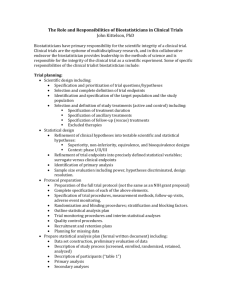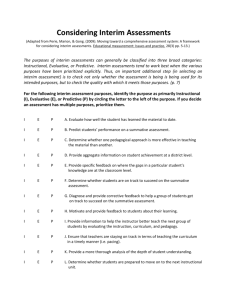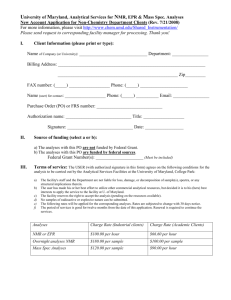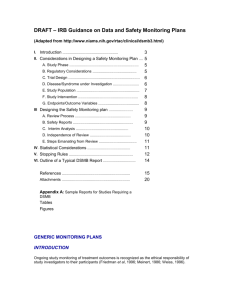Interim statistical analysis plan template (11 Nov 2013)
advertisement
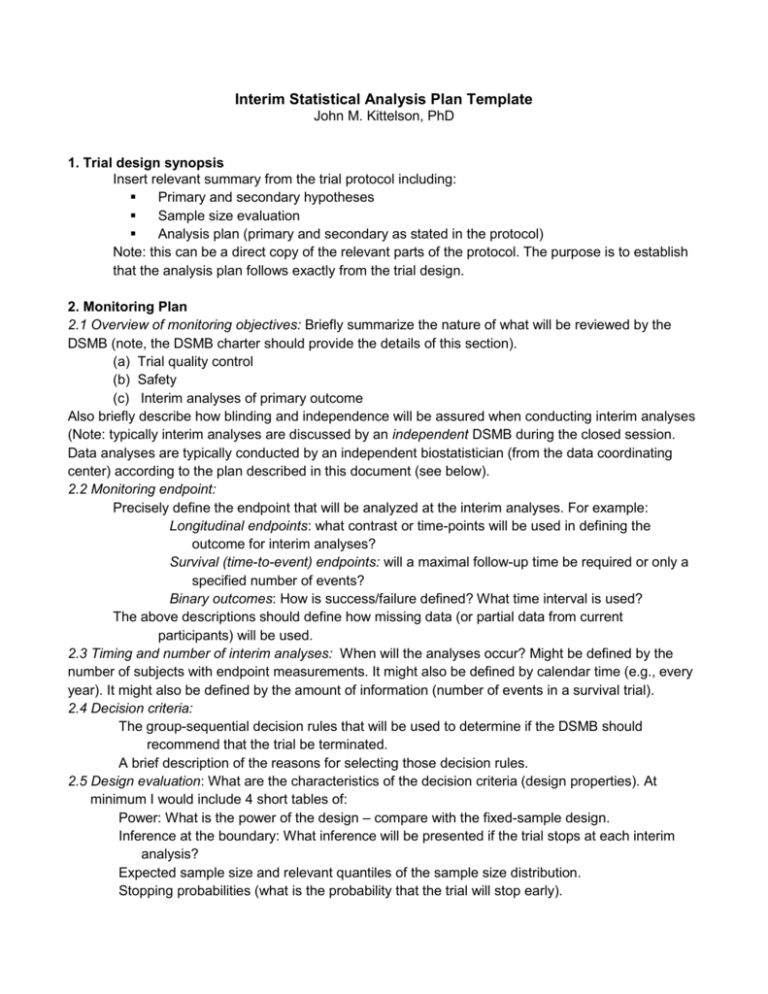
Interim Statistical Analysis Plan Template John M. Kittelson, PhD 1. Trial design synopsis Insert relevant summary from the trial protocol including: Primary and secondary hypotheses Sample size evaluation Analysis plan (primary and secondary as stated in the protocol) Note: this can be a direct copy of the relevant parts of the protocol. The purpose is to establish that the analysis plan follows exactly from the trial design. 2. Monitoring Plan 2.1 Overview of monitoring objectives: Briefly summarize the nature of what will be reviewed by the DSMB (note, the DSMB charter should provide the details of this section). (a) Trial quality control (b) Safety (c) Interim analyses of primary outcome Also briefly describe how blinding and independence will be assured when conducting interim analyses (Note: typically interim analyses are discussed by an independent DSMB during the closed session. Data analyses are typically conducted by an independent biostatistician (from the data coordinating center) according to the plan described in this document (see below). 2.2 Monitoring endpoint: Precisely define the endpoint that will be analyzed at the interim analyses. For example: Longitudinal endpoints: what contrast or time-points will be used in defining the outcome for interim analyses? Survival (time-to-event) endpoints: will a maximal follow-up time be required or only a specified number of events? Binary outcomes: How is success/failure defined? What time interval is used? The above descriptions should define how missing data (or partial data from current participants) will be used. 2.3 Timing and number of interim analyses: When will the analyses occur? Might be defined by the number of subjects with endpoint measurements. It might also be defined by calendar time (e.g., every year). It might also be defined by the amount of information (number of events in a survival trial). 2.4 Decision criteria: The group-sequential decision rules that will be used to determine if the DSMB should recommend that the trial be terminated. A brief description of the reasons for selecting those decision rules. 2.5 Design evaluation: What are the characteristics of the decision criteria (design properties). At minimum I would include 4 short tables of: Power: What is the power of the design – compare with the fixed-sample design. Inference at the boundary: What inference will be presented if the trial stops at each interim analysis? Expected sample size and relevant quantiles of the sample size distribution. Stopping probabilities (what is the probability that the trial will stop early). 3. Implementation: Document how the pre-trial plan will be modified if the interim analyses do not occur as planned. Specifically: What approach will be used to select new decision criteria if the analysis timing is altered? What approach will be used to define the critical values that were used at previous interim analyses if the estimated information changes at later interim analyses? Will the maximal sample size be altered in order to maintain trial power if the number or timing of interim analyses changes? 4. Plans for analysis and reporting of results: What bias-adjustment method will be used for reporting trial results? This should include the method for determining the bias-adjusted point estimate, interval estimate, and p-value.

